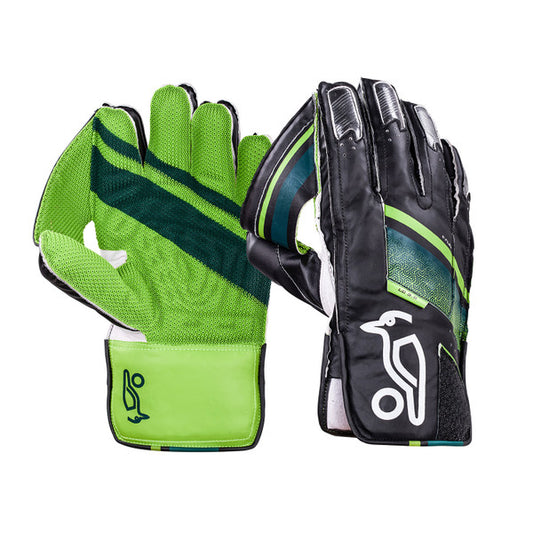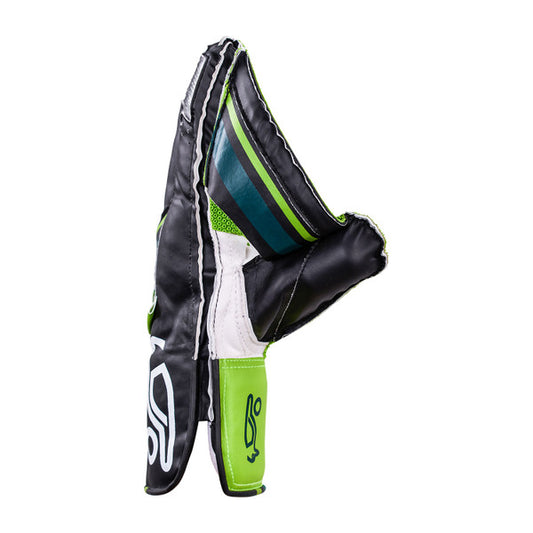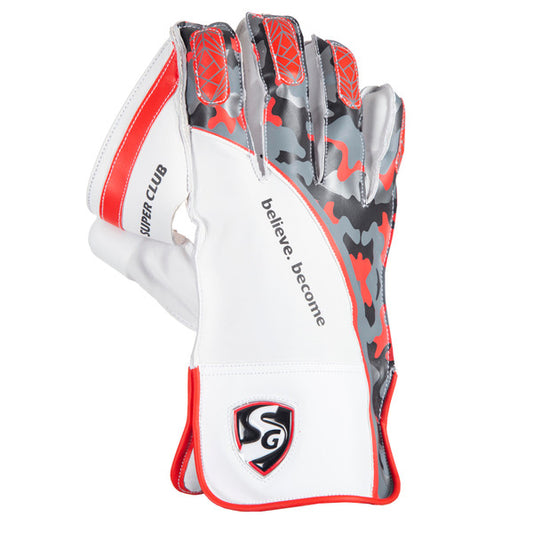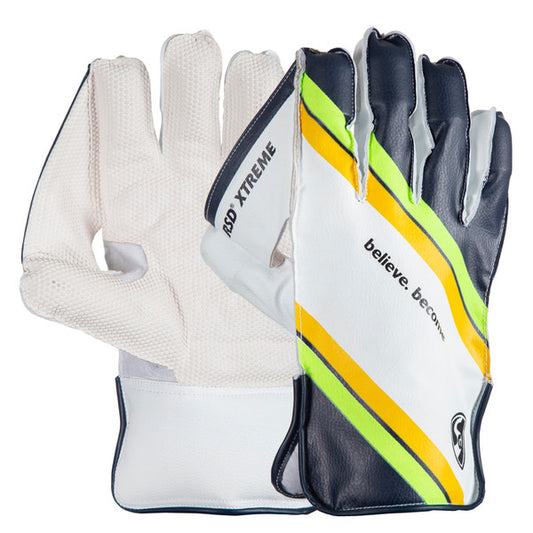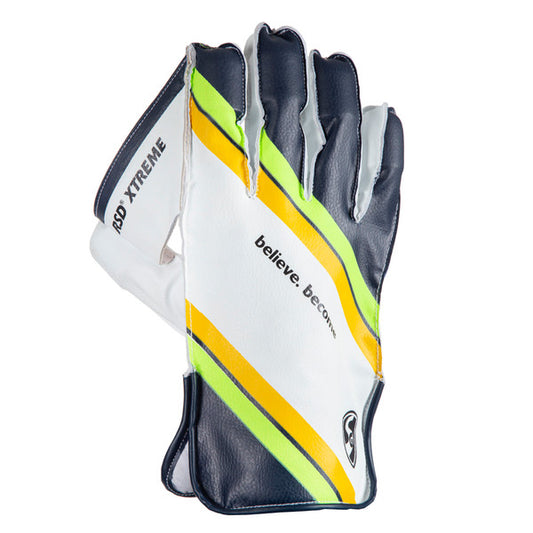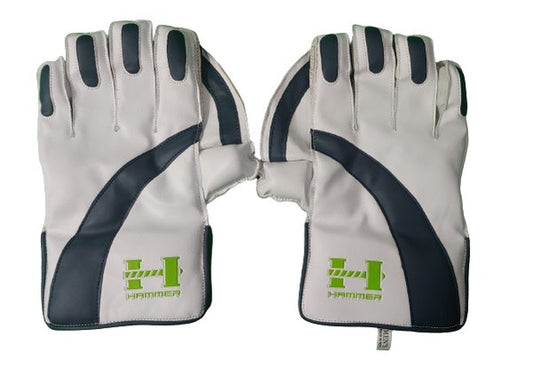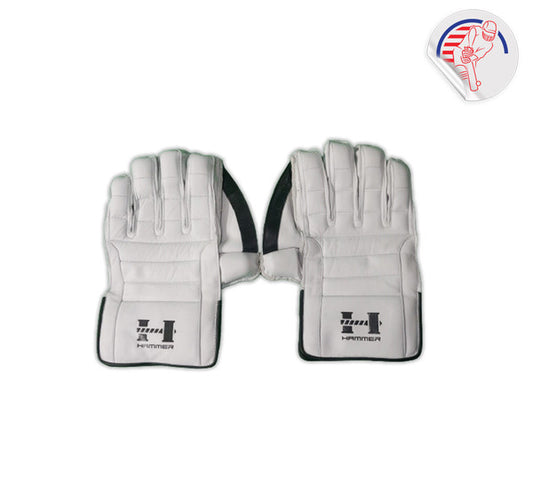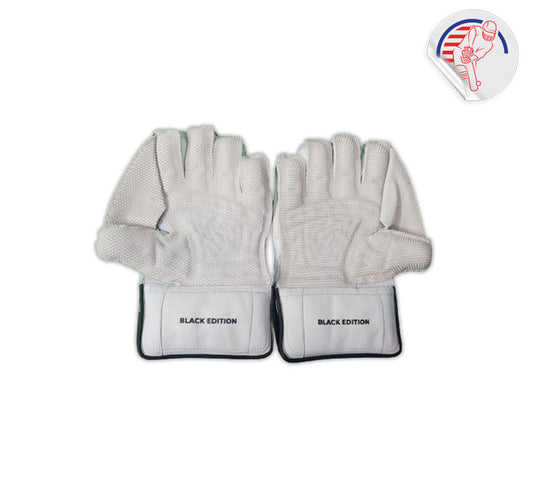The wicketkeeper is the only fielder allowed to wear gloves during fielding. They provide adequate protection against any potential damage from the incoming fastball. Professional, fast bowlers bowl at an average of 135kmph. The keeper has less than a second to judge the ball as it passes the batsman. Wicket-keeping gloves reduce the impact of the ball on the keeper’s hand.
Buying wicket-keeping gloves for kids requires accurate knowledge of the size guide, build quality, maintenance, and brands (e.g., Kookaburra, Puma, SS, GM, etc.). Let our experts walk you through a detailed guide on youth wicket-keeping gloves below.
Youth Wicket-Keeping Gloves
As a parent, you don’t want your kids to get hurt while catching the ball behind the stumps. An injury can put them way behind their mates, as they will not be able to play at their absolute best. Therefore, it is more important for youth players to have comfortable and rigid gloves that provide all the necessary protection a keeper needs.
Youth wicket-keeping gloves have the same build and quality as adult wicket-keeping gloves but come in smaller sizes than adult ones. That’s probably the only difference between adults and youths keeping gloves. At CricketStoreOnline, we have top-of-the-line wicket-keeping gloves from well-known and trusted manufacturers across the globe.
What is the Size of Youth Wicket Keeper Gloves? Guide
It is important to find gloves that fit perfectly on your hand. Tight gloves are a sweet spot but make sure they are not too tight to restrict your movement or slow you down. As keepers often have to take their gloves off for a throw, gloves that are too tight might make things difficult for them. When buying gloves, leave some room for the inners under the gloves. Some keepers prefer to have two or three inners for extra protection against the ball.
To calculate what glove size you need, measure the length from your wrist to the tip of your longest finger. Here is a chart for the length of different sizes:
|
Size |
Length |
|
Mini |
14cm or less |
|
Extra Small Junior |
15.5cm |
|
Small Junior |
16.5cm |
|
Junior |
17.5cm |
|
Youth |
19cm |
|
Small |
20cm |
|
Medium |
21cm |
|
Large |
22.5cm |
|
Extra Large |
23cm + |
This is a generic size chart. Keeping gloves sizes might be different for some brands. Also, note that kids grow extremely fast during the age of 8-14 years and gain most of their height in these years. Parents must consider this while buying a pair of gloves for their young ones because you want them to last for as long as possible. If you go with loose gloves, your kid will have to compromise on the grip, but the best way is to buy a pair of glove inners to compensate for the extra space inside.
What Are Wicket-Keeping Gloves Made of?
Wicket-keeping gloves are generally larger than batting gloves and provide a larger surface area for the keeper to catch the ball accurately. They have a thumb and middle finger webbing to protect the ball from escaping after the keeper catches it. Traditionally, the gloves are made with premium quality leather on their back while having a rubber grip on the palm, providing a better grip on the ball.
Some manufacturers use modern synthetic materials like PVC and Polyurethane(PU) for gloves, making them lighter in weight. However, gloves made with leather last longer and have better quality. Most wicket-keeping gloves come with padding cushions on the top of each finger, ensuring their safety throughout the game. The gloves inside have a cotton lining that helps to soak the sweat from your hands, keeping them dry throughout the game.
Things you need to know before buying wicket-keeping Gloves
1. You need to make sure that they fit well. They should be snug but not too tight and allow you to move your fingers freely.
2. Choose a pair that offers better protection and is comfortable. Wicket-keeping gloves with textured palms offer a better grip on the ball.
3. Wicket-keeping gloves are different from batting gloves. They are larger than batting gloves and have a unique design for accurate ball catching and stumping.
4. Wicketkeepers wear inners beneath their wicket-keeping gloves. They absorb most of the sweat from your hands, keeping them dry in hot conditions. They also provide better shock absorption and control on the ball.
5. Many professional keepers wear one or two inners to protect against the ball.
Maintenance Guide for Wicket Keeping Gloves
Taking good care of your equipment can prolong its life. Here are some tips to help you:
- Clean your kid’s gloves after every game.
- To keep your wicket-keeping gloves in good condition, one must follow the manufacturer’s instructions to clean them
- You should avoid using any oil-based product for cleaning as it can damage the material used to make them
- You can use a brush with soft bristles to clean the dirt from their surface.
- After cleaning them, apply a leather conditioner on them. It will help them last longer.
- After cleaning them, leave them to dry naturally along with your pads.
What we covered in this article:
- What is a wicket-keeping glove
- Build of wk gloves
- Size of wicket keeping gloves
- Maintenance Guide
- Buying guide
For the past two decades Cricketstoreonline has been serving cricketers in North America and all over the world. Our experts know exactly how to serve you. We are the certified distribution partners of major cricket brands and only sell original products. If you are looking to buy a perfect cricket wicket keeping gloves, give us the opportunity to guide you!
You can call our experts from CricketStoreOnline or visit our expert blog on cricket to get more insights on cricket equipment!

